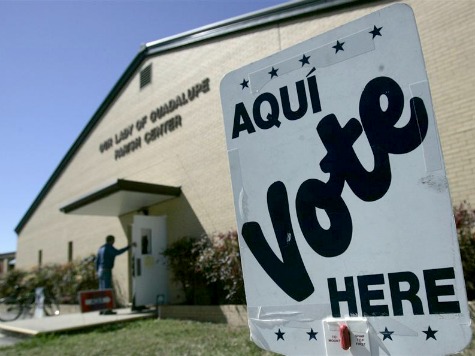Latinos represent the fastest growing segment of California’s population and its electorate. In August, Univision released a survey, “Winning with Hispanics in the Midterms: The Why, The How and the What” that showed Latinos comprise 28% of the Golden State’s eligible voters and 24% of its registered voters. The poll found that about a quarter of Hispanic voters in California are age 18 to 34–i.e., millennials. Because this fast growing demographic disproportionately influences their parents’ politics, Hispanic millennials are the key to up to 28% of the California vote.
Public CEO reported that in America, “There are 800,000 Latinos reaching voting age every year and engaging them at an earlier age is becoming more and more important, so that a huge part of our country is not left out of the political process,” according to Jessica Reeves, Vice President of Marketing and Partnerships at Voto Latino, a supposedly national non-partisan organization dedicated to empowering Latino Millennials to vote.
About two-thirds of Latinos in California are bilingual or do not speak English. That means, Reeves says, that many “Latino Millennials are marrying and starting families young, but they are also serving as sources of information for their parents.”
Mindy Romero, director of California Civic Engagement Project (CCEP) at the UC Davis Center for Regional Change agreed. “Generally speaking, the Latino population is a younger population, whether they’re eligible (voters) or actual voters.” Romero believes that anyone running for any election almost anywhere in the state can benefit through Latino outreach.
Last year, students from the Chicano/Latino Research Center at UC Santa Cruz conducted a study entitled, “Broadening the Electorate in Central California.” They found that face-to-face interaction, or canvassing, was very effective among Latinos of all ages, even Millennials.
Romero points out that it is important to make sure the right people are making the personal contact. “For younger Latinos, does it matter who’s doing the contact? Does it have to be fellow youth, for instance? Does it have to be youth of the same color? The same background,” Romero asked, rattling off a list of questions many outreach coordinators must be asking all over the state. She emphasized, “For youth, if they are contacted that’s one thing, that’s great, but if they are contacted by a fellow youth, a peer-to-peer contact, that makes a lot of difference.”
Millennials primary form of communication is digital. “They’re the fastest adopters of new technology,” said Reeves. “I think that we also need to be engaging Latino Millennials on those platforms and in a way that is going to be relevant to them.”
That’s good news for the new website, Voter’s Edge, which is a collaborative effort between the League of Women Voters of California and MapLight, an organization sponsored National Chamber of Commerce and the National Board of Realtors. Voter’s Edge makes non-partisan information on all political races accessible. The effort includes analysis of ballot initiatives and the local and statewide candidates. For the 2014 midterm elections, Voter’s Edge will merge its publications with the League’s Smart Voter as a comprehensive portal for voter education.
Voter’s Edge offers an English and Spanish translated site, but this information seldom reaches older generations of Hispanics that are often technologically illiterate. That is partly why Hispanic Millennials will increasingly be the gateway for political campaigns to influence California’s fastest growing demographic.

COMMENTS
Please let us know if you're having issues with commenting.